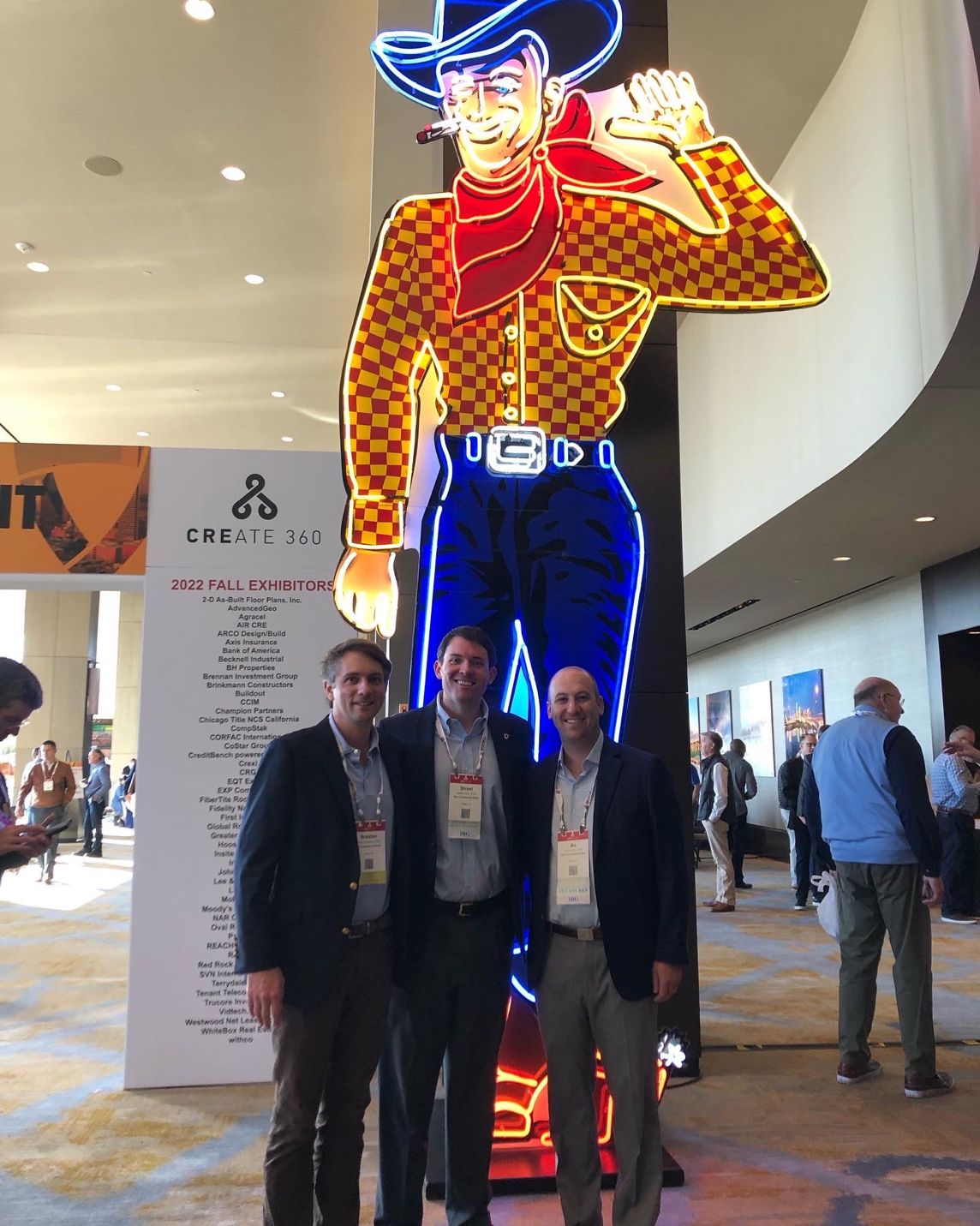By Bo Hargrove | October 26th, 2022
At the SIOR Conference in Dallas on October 20, 2022, there was a Mega Session on Industrial Development Moderated by SIOR Global President Patricia Loveall of Kidder Matthews, which featured an amazing group of panelist Tal Hicks (President, Hillwood Investment Properties), Jonathan Rudersdorf (President Central Region, Prologis), and Adon Panattoni (CEO Panattoni Development).
All of the developers on the panel are actively working in a number of pragmatic ways to try to future proof their budlings, such as:
- Increase the available parking load, due to continued and sizable increases in parking requirements.
- Maximizing capacity, flow, and circulation for vehicles both on and off site.
- Increase the load capacity on roofs for the future, which could include load for solar panels or even parking.
- Gone are the days where an industrial building was simply a slab and a roof that doesn’t leak. More and more technology, equipment, infrastructure, HVAC, and power are being planned into buildings.
- Many developers are trying to add truck EV infrastructure but finding the grid can’t handle it. The result is that in some cases, they can only add conduit or wiring proactively hoping/expecting grid and political enhancement will be made in the future.
Given the land scarcity, there is a push for more urban infill land sites, which often poses a number of challenges form the development viewpoint, such as:
- Developers need a much deeper political strategy if you want approvals in many cases.
- Developers are going to have to accept getting more creative, sacrificing some land for other uses, perhaps a park or housing to get necessary approvals.
- Though not all developers are choosing this strategy, some Brownfield Sites are coming into play where they have not before. Some developers are seeking to repurpose some of the brown fields for smaller format tenants. Those small businesses are booming and didn’t over-hire or over-expand in the latest cycle.
- Jurisdictions are tough on trucks across the board, which makes it tough to plan developments that are demanding more truck access, parking, and storage. There is a lot of down-zoning going on and this will continue to be a challenge.
The lending environment has dramatically changed over the last 90 days and is having a huge impact on projects across the various phases of development.
- Lending is VERY tight for development projects and in most cases nearly impossible to get, most especially for anything speculative. All of the biggest developers are pulling back on speculative projects unless the money is already set.
- Cap Rates are rising and rising very quickly. Between the land prices, the money pinch, interest rate hikes, and construction pricing, the numbers are very tough. Given those circumstances, Developers will need to lower their yield to cost with higher interest rates and cap rates. This will inevitably drive land prices down, so any landowners that haven’t sold missed the window. A correction on land pricing could be in the range of 30%.
- Lots of re-trading on deals is occurring. If the parties are not aligned, deals are falling apart.
Here are some wrapping thoughts from the Panelist in this great discussion:
- Prologis is going to be opportunistic and protect their capital.
- Ross Perot Jr. believes interest rates are going to be quite high for the foreseeable future. Don’t expect them to go back to where they were, it won’t happen.
- Supply chain and entitlements have slowed development for the last two years and in part had an impact on bringing the occupancy rates (supply demand) where they are today.
- Controlling power and energy is going to become extremely important. Creating power through solar and then storing it instead of putting it back on grid. Many municipalities are controlling power use, for example natural gas.
Thanks to SIOR and all the sponsors for hosting a wonderful conference. This panel was full of great insight. I hope you enjoyed the recap!









